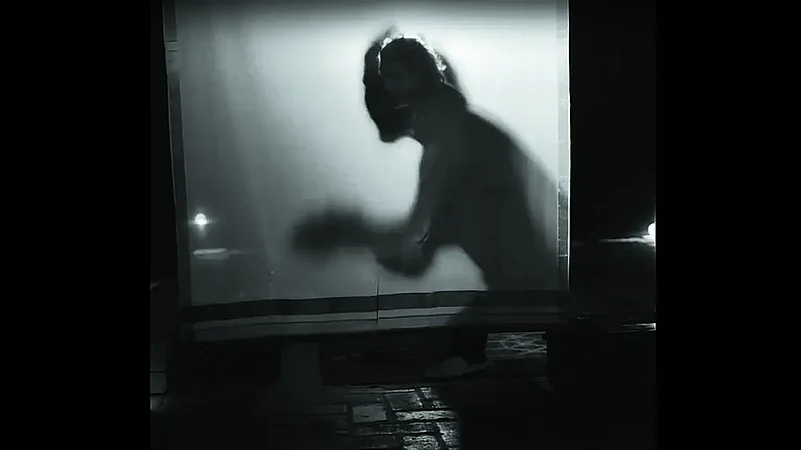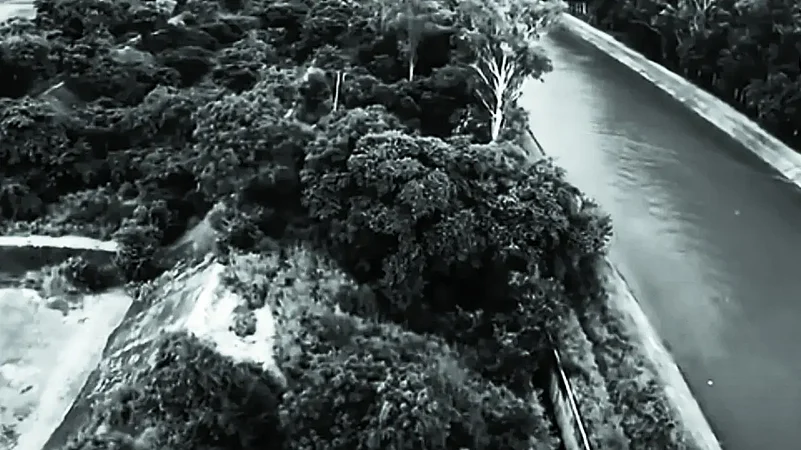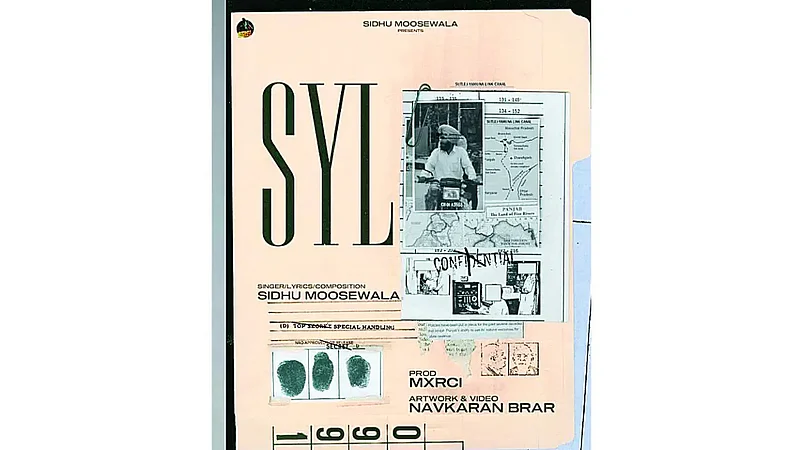The posthumous release of a song titled SYL continues to keep slain Punjabi rapper Sidhu Moosewala in the news. SYL brings with it unprecedented online attraction towards his persona, a premeditated theorisation of his work and continued iconisation—all amid a wave of intense mourning as the political atmosphere remains charged with frustrations and expectations.
Slain Rapper Sidhu Moosewala’s Song SYL Holds A Mirror To His Life And Craft
In music videos, he violently subjugated imaginary enemies and doppelgangers of his contemporary artistes. The thrill of violence, the chase, and a global beat of hip-hop masked his hyperlocal poetry devoid of aesthetic quality

When SYL dropped—referencing the Sutlej-Yamuna Link canal project between Punjab and Haryana—the stage was already set for glorification of its content, projecting the singer as the voice of unresolved issues of Punjab. A montage of words emerged from the lyrics—SYL, sovereignty, Bandi Singh (Sikh prisoners), Punjab-Haryana-Himachal (the Post-Independence undivided province of Punjab), Balwinder Jattana, paani (water), topi (cap), pagg (turban) and attwadi (terrorist). This ‘sensation’ of words is fertile for political interpretations, veiled references. Not much is left camouflaged if you look closely. The visuals—especially old footages—reveal meanings beyond the obvious statements. One example that hits you in the face is the cry to release Sikh prisoners, citing principles of fairness, also glorifying the brutal acts of those convicts.
We must, however, look at the context in more detail. The cold-blooded murder of Shubdeep Singh Sidhu, alias Sidhu Moose-wala—a 28-year-old singer-songwriter-rapper who acted in a few films in his short, five-year career—on May 29, triggered shockwaves much beyond his fans. The tragedy stoked a socially and politically charged atmosphere that triggered an impulsive social media and a wild run for the number-centric ‘X Things You Need to Know’ brand of journalism.

Moosewala, a graduate of electrical engineering and the son of a retired government employee, continued to live a farmer’s life in his village, Moosa, in Mansa district of Punjab, even after attaining global fame. His appeal ranged from the villages of Punjab to the nightclubs of Delhi, to the Punjabi diaspora and even in the American hip-hop scene. He recently contested, but lost the assembly election as a Congress candidate from Mansa, amid an Aam Aadmi Party wave. Many said he’d joined the wrong party as Congress was responsible for Operation Blue Star and massacre of Sikhs after assassination of Indira Gandhi but hadn’t been rejected just because he lost the election. The Punjab government had pruned Moosewala’s security just a day before his murder as part of a “crackdown against VIP culture”; cited as a factor in his murder. This narrative—of the murder as failure of the state—has been extended to glorify Moosewala in every possible way.
Union Home Minister Amit Shah met Sidhu Moosewala’s parents at a Bharatiya Janata Par-ty (BJP) office on June 3 amidst rumours of fie-lding his father Balkaur Singh as a candidate for the Sangrur Lok Sabha bypoll. The seat had been vacated by Bhagwant Mann after becoming Chief Minister of Punjab. From radical Sikh circles, too, there’d been calls to field Balkaur Singh as a joint candidate of opposition part-ies—excluding BJP. None of that happened, though the election was won by Simranjit Singh Mann, a vocal supporter of Khalistan in whose campaign Moosewala remained a constant reference. The narrative had other feeders too. The Shiromani Akali Dal (SAD) had first sought to convince Simranjit Mann to bec-ome a “common” Akali candidate. When Mann refused, SAD fielded Kamaldeep Kaur, a relative of Balwant Singh Rajoana—convicted in the assassination of the then CM Beant Singh in 1995. The SAD—reduced to a historic low of three MLAs—was visibly trying to regain gro-und by posturing as a representative of Sikhs, and more so to appease the radical fringe.

Moosewala’s SYL was released on June 23, the date of polling. On June 27, the date of the result, it was reportedly taken off his channel by YouTube with a message that ‘this content is not available on this country domain due to a legal complaint from the government’. The song remained available on multiple other YouTube channels and music streaming platforms. The ‘ban’ on the song attracted media attention and was even raised in the assembly by Sukhpal Singh Khaira, a Congress MLA. The song is now available on Sidhu Moosewala’s official YouTube channel, though this restoration failed to get media attention. The song can be understood in a continuum of his journey as a singer, and in the discourse-oriented fault lines of Punjabi society. Violence, weapons and display of wealth in the forms of vehicles, SUVs and tractors, remained regular features of his music videos. His lyrics in the Malwai dialect of Punjabi, replete with English words, imagined himself as an all-powerful masculine figure subjugating every adversary, imagined or real.
The Punjabi macho gesture of thigh-thumping—‘thigh-five’, as it is called in media lexicon—was his regular performative gesture on stage. In music videos, he violently subjugated imaginary enemies and doppelgangers of his contemporary artistes. The thrill of violence, the chase, and a global beat of hip-hop masked his hyperlocal poetry devoid of aesthetic quality. He boosted this to hit the chart beat and attract impressionable global audiences. In his songs, he displayed his wealth, power and popularity—that’s what he and his fans wanted. He bulldozed through those market-driven sensations to serve what’s saleable. So, SYL was a logical progression in Sidhu Moosewala’s career graph. When he had lost the election earlier this year, he had responded with a song? titled Scapegoat in which he criticised voters for not electing honest people like himself. Like typical Punjabi politicians who resort to divisive politics in the name of religion in difficult times, he too looked for a market around the fault lines.
In Punjab, religious, social, political and linguistic fault lines have equally strong attractions and repulsions. When numbers measure success, lines of attractions and repulsions blur; every response gets counted as engagement, hence success. Moosewala had no conceptual problem with injustice and oppression; he dealt in specifics and made subjective choices. Time and again, he established himself as a self-glorifying legend, even demeaning Kashmir to assert the identity of his kind of Punjab. He appreciated the slain black American rapper Tupac Shakur, but identified himself with the white in essence.

This is visible in SYL, right from the title to the montage of words and visuals that touch raw nerves. He glorifies assassins in the name of rights of prisoners, languishing in jails even after completing their sentences. He threatens to unleash violence as it was indiscriminately used against workers and engineers building SYL canal; unless ‘the other’ refuses to mend ways—this is what his mention of Balwinder Singh Jattana seeks to do. In appearing to criticise the police excesses against Jattana’s family after he killed SYL workers, Moosewala in fact glorifies the murders that Jattans committed. At no point does he cite these incidents to reach a common concern for justice and humanity.
The sensations the song releases trigger direct memories and lived traumas of a violent past. The lyrics, Kyun Paggan Naal Khainda Phirda Topi Aaleya (Why is a cap-wearing man getting into a fracas with those who wear the turban?) is a deliberate play with religious fault lines. The references are left for people to decode. Punjab’s Partition trauma and post-colonial experiences help people decode this sensation as corpse-happy politics. This rhetoric dominates the political commentary after Moosewala’s murder declaring him the voice of Punjab, strong enough to compell the state to use violence against him. This tragedy is an opportunity for some to make their politics relevant. SYL is an attempt to encash the fault lines and it is not averse to inflicting tragedies to create opportunities. The only marked difference between SYL and his other songs is a different kind of deployment of violence, weapons, memories and an all-powerful masculinity. Meanwhile, a viral video claims that as a tribute to Sidhu Moosewala, his song So High was played on the Pakistani side of Attari-Wagah. This is also ‘sensation’. The song goes well with the routine hyper-nationalism and violent masculinity displayed by neighbouring countries to undermine each other—done with song and dance at the evening retreat ceremony on this border. The countries have a past and people across the border have linguistic affinity. This is ‘vulnerability’.
Advertisement
Horrible accidents inhabited his fast-paced lifestyle, but it must be noted that the state and society also failed to address his vulnerability. It will remain difficult to discern whether his songs are representative of him or his killers, or if they are mirror images of each other. Simil-arly, these songs can be played by anyone on eit-her side of Wagah-Attari border as the aggressive posturing is well-rehearsed and synchronised amongst countries that refuse to empathetically address the fault lines. They survive on combative militarism; the mirror image of each other. Much of the intellectualisation of his death, too, has avoided scrutiny and criticism. Murder weaponised politics refuses to accommodate sanity as a human virtue. It despises contemplative mourning. It loves sensations. Dangerous populism—mounted on a tragedy—sacrifices rationality. This refuses to leave any space for empathetic revisits to fault lines. Reconciliation is a default casualty.
Advertisement
Overall, Punjab needs better representation, aesthetically rich and intellectually nuanced. Political prisoners need better articulation to plead their cases. Fault lines need to be discussed, negotiated and debated delicately. Punjab would prefer to be an inclusive society and a wonderful neighbour on every side of borders and boundaries, a lesson learnt from the victorious Kisan Morcha. Not from the traumas inflicted and replayed by divisive discourses.
(This appeared in the print edition as "Stream of Consciousness")
(Views expressed are personal)?
Advertisement
Daljit Ami is the director of Educational Multimedia Research Centre, Punjabi University



















